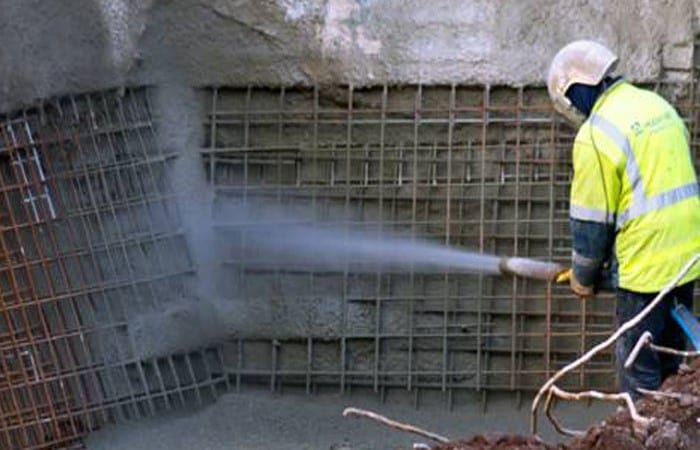Any experienced construction worker will understand that there is a very fragile relationship between the water to cement ratio in concrete. Sure, there is also a delicate relationship between all concrete ingredients including additives and aggregate, but the water to cement ratio needs to be precise to ensure the finished product is superior and will last the test of time.
Wet mix shotcrete is a process whereby the ingredients of concrete are mixed in a hopper and then sprayed pneumatically through a hose to the nozzle. Alternatively, the concrete can be delivered to the construction site from the plant directly. An experienced nozzleman is required to control the spraying of the shotcrete so that the finished product is homogeneous. There are a variety of applications for wetmix shotcrete, including swimming pools, skate parks, retaining walls, and repair and maintenance works.
One of the biggest mistakes that shotcrete contractors can make is adding too much water to the hopper which results in a product that has less compressive strength and is less durable. To give you more insight into this relationship, we’re going to discuss the consequences of adding too much water to the shotcrete process.
Background
The water to cement ratio is essentially the ratio between the weight of water and the weight of cement in a concrete mix. Around the same time that shotcrete was invented, American research Duff A. Abrams conceived the concept of the water to cement ratio. He is also known for other inventions such as the slump test for measuring the consistency of fresh concrete.
When there is too much shotcrete being sprayed, a common trap that nozzleman tend to fall into is asking for more water to be added to the hopper. This is very detrimental to the finished product because too much water will damage the water to cement ratio and result in an inferior final product. This is why only experienced nozzleman should be employed to ensure the best results.
Effects of too much water
The two largest effects of adding too much water to the concrete mix are loss of compressive strength and loss of durability.
Loss of compressive strength
As an example, one m3 of concrete typically consists of 400 – 450kg of cement. Let’s just say there’s 425kg/m3 and a water to cement ratio of 0.45. Therefore, one m3 of cement consists of:
Cement: 425kg
Water: 425kg cement x 0.45kg water = 191.25kg water
Now, let’s say the operator complies with the nozzleman’s request and adds more water to the hopper because the shotcrete is coming out too fast. Considering that a hose normally pumps roughly 60 litres/minute, if the operator leaves the hose in the hopper for a minute, he/she would have added an additional 60L (or 60kg) of water which is almost an extra 33%. In terms of compressive strength, the additional water equates to roughly a 9% reduction in compressive strength within 1 month
Loss of durability
In a similar fashion to compressive strength, durability is also reduced when the water to cement ratio is increased. When the ratio is high, the cement particles are dispersed meaning that when the concrete sets, the cement’s hydration products don’t cover the entire space leaving a porous finish. The more the water to cement ratio is increased, the more the concrete becomes porous and the less durable it is. Keep in mind that the opposite is true also in that when there is a lower cement to water ratio, the concrete becomes less porous and more durable.
Conclusion
As you can see, the effects of adding too much water to the concrete mix has a compounding effect on the final product in terms of both compressive strength and durability. This is why it’s always advised to check the specifications from the plant before applying any concrete, and if there are no specifications provided, simply send the batch back to the plant.
If you have any further questions relating to the shotcrete mix, simply phone the professionals atEvolution Shotcrete on 07 5561 8885.
